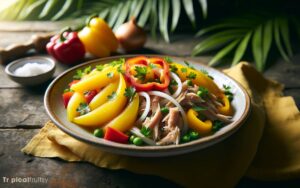Can You Freeze Ackee and Saltfish? Explore!
Ackee and saltfish, a traditional Jamaican dish, is renowned for its unique flavor and cultural significance.
As aficionados and home cooks often seek to preserve this delicacy, the question arises: Can one freeze ackee and saltfish?
In this context, it is imperative to consider the factors that influence the freezing quality, including texture, taste, and safety.
This introduction will guide readers through the critical steps of preparing ackee and saltfish for freezing, the best packaging techniques to maintain freshness, and the proper methods for thawing and reheating.
Additionally, we will address common freezing pitfalls and discuss the shelf life of frozen ackee and saltfish.
For those exploring alternatives to freezing, options will be briefly explored, ensuring a comprehensive understanding of preserving this beloved dish.
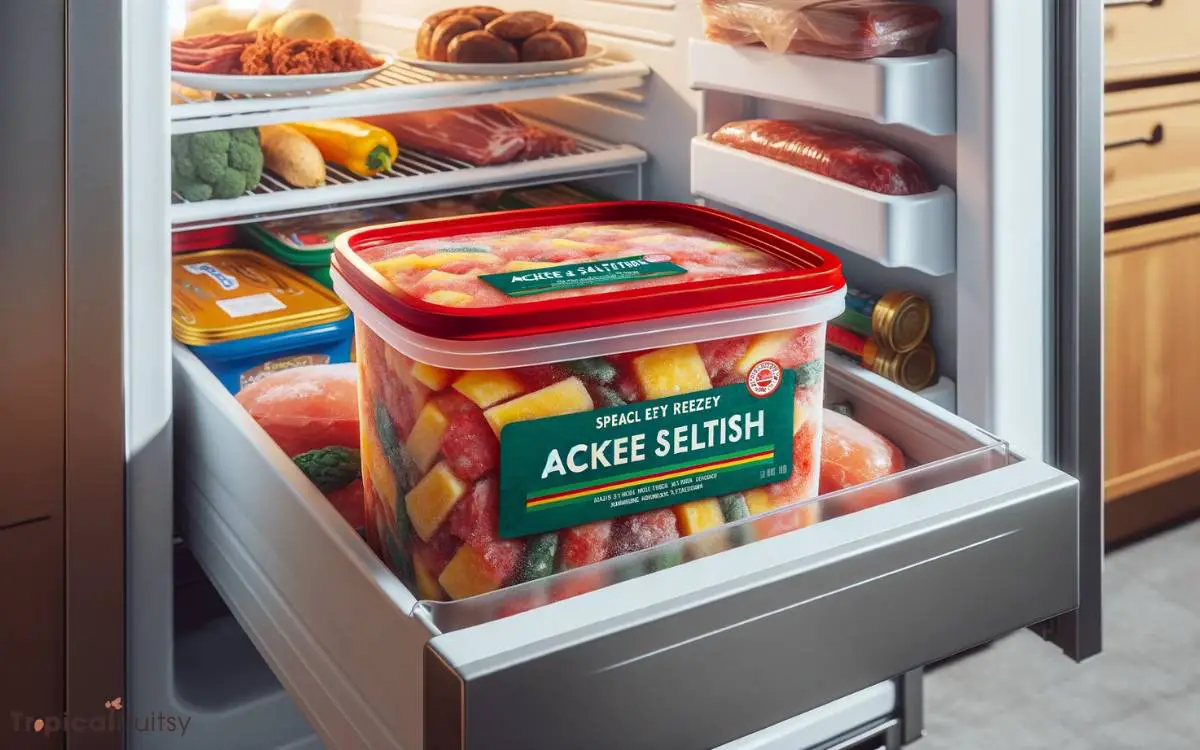
Key Takeaway
Understanding Ackee and Saltfish
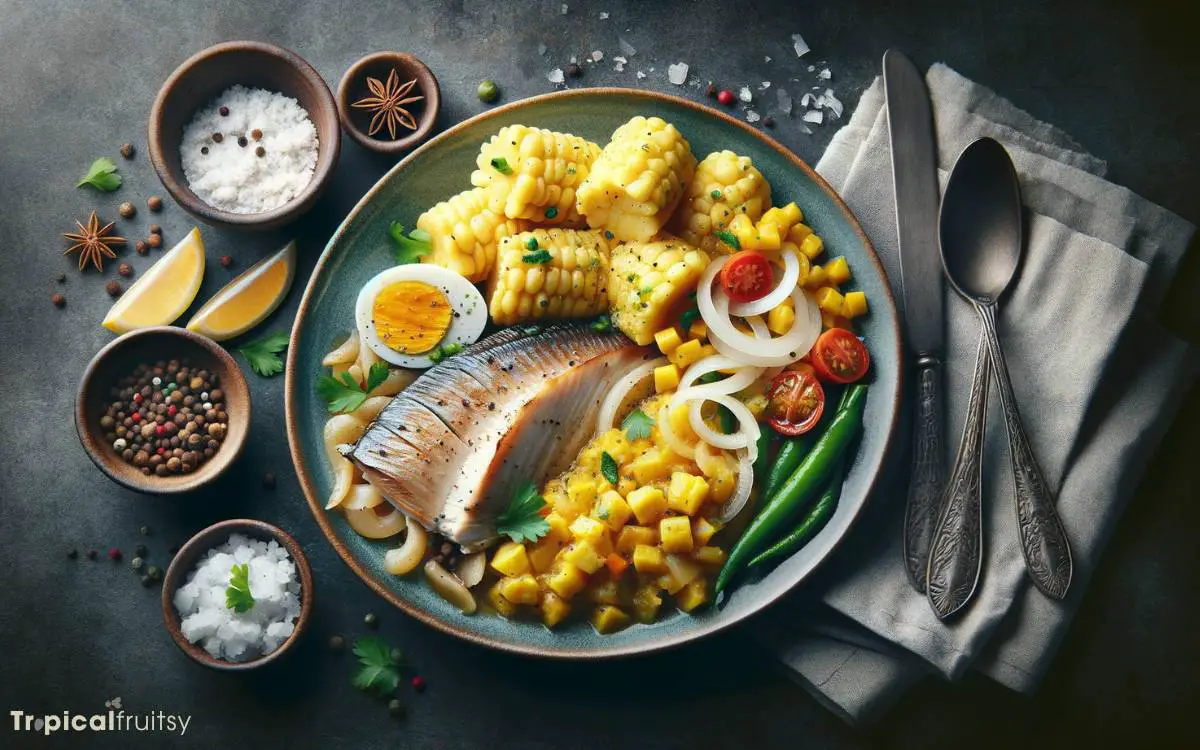
Ackee and saltfish, Jamaica’s national dish, combines the buttery fruit of the ackee tree with salt-cured fish, typically cod, creating a savory and distinctive meal.
The ackee, scientific name Blighia sapida, is a tropical evergreen tree native to West Africa, bearing fruit with a rich, creamy texture and delicate taste when cooked.
The arilli, or edible portions, must be carefully separated from the toxic black seeds and red fibrous lining when the fruit has naturally opened, ensuring safety for consumption.
Saltfish is traditionally preserved Atlantic cod that has been subjected to a process of salting and drying to extend its shelf life and impart a robust flavor profile.
When amalgamated, these two components deliver a culinary experience emblematic of Jamaican cuisine’s vibrant and eclectic palate.
Factors Affecting Freezing Quality
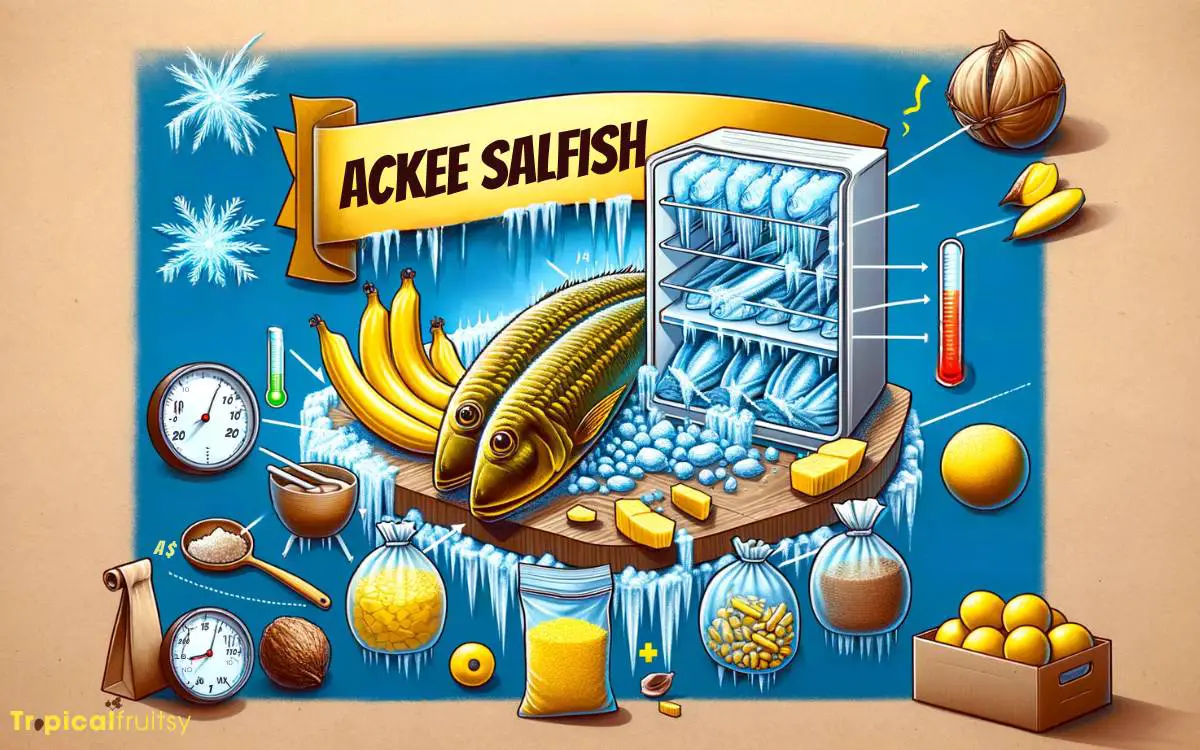
Following the culinary overview of ackee and saltfish, it is crucial to consider various factors that can influence the quality of the dish when frozen. These factors include texture, moisture content, and flavor retention.
To maintain the integrity of this traditional Jamaican dish, consider the following factors:
- Cellular Structure: The delicate cellular structure of ackee can be compromised, leading to a mushy texture post-thawing.
- Moisture Balance: Excess moisture can cause ice crystals to form, damaging the texture and resulting in a watery consistency.
- Flavor Preservation: The intricate balance of spices and the saltiness of the fish must be preserved to maintain authenticity.
- Container Selection: Proper airtight packaging is essential to prevent freezer burn and flavor contamination.
Understanding these elements is the first step before delving into the specifics of preparing ackee and saltfish for freezing.
Preparing for the Freezer
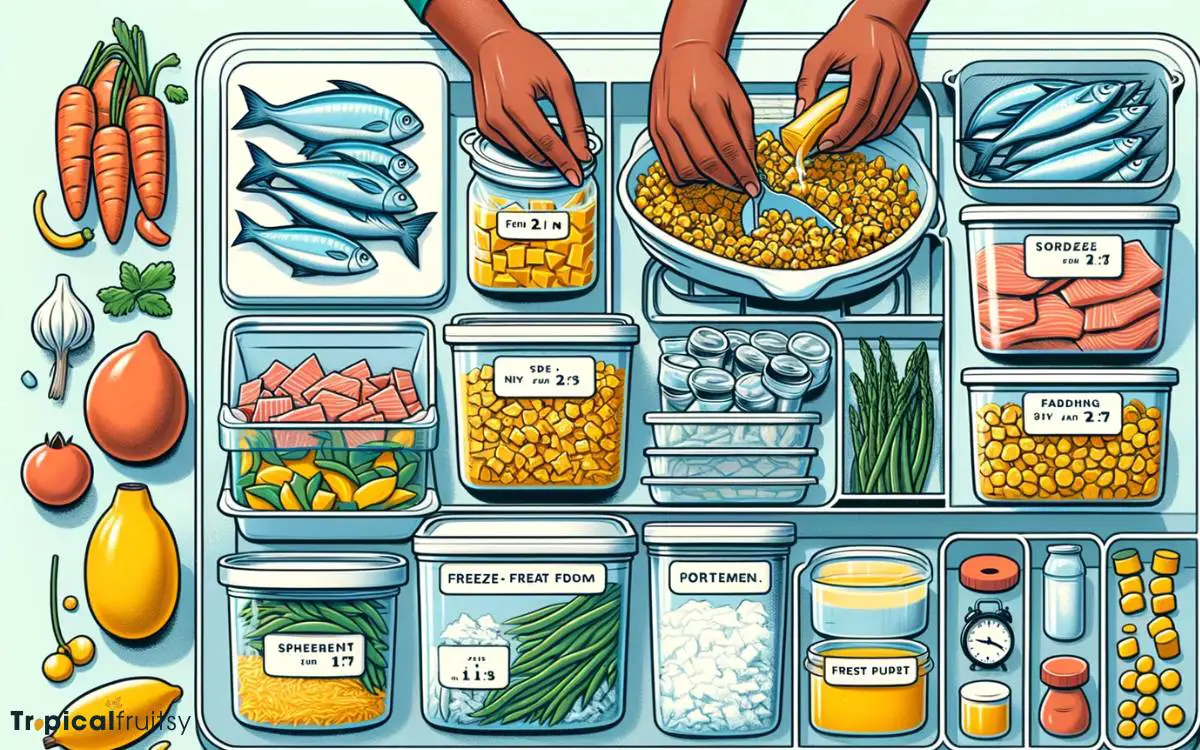
To ensure optimal freezing results, every step in the preparation process must be meticulously executed, from selecting fresh ingredients to properly cooling the cooked dish.
Begin by sourcing the highest quality ackee, free of blemishes and at peak ripeness. The saltfish should be thoroughly desalted and flaked.
Once the dish is cooked, it is essential to allow it to cool uniformly to room temperature, avoiding any bacterial growth that could compromise safety and flavor.
Rapid cooling techniques can be employed, such as immersing the cooking vessel in an ice water bath while stirring the ackee and saltfish gently. This method ensures even temperature reduction without degrading texture.
Proper Packaging Techniques
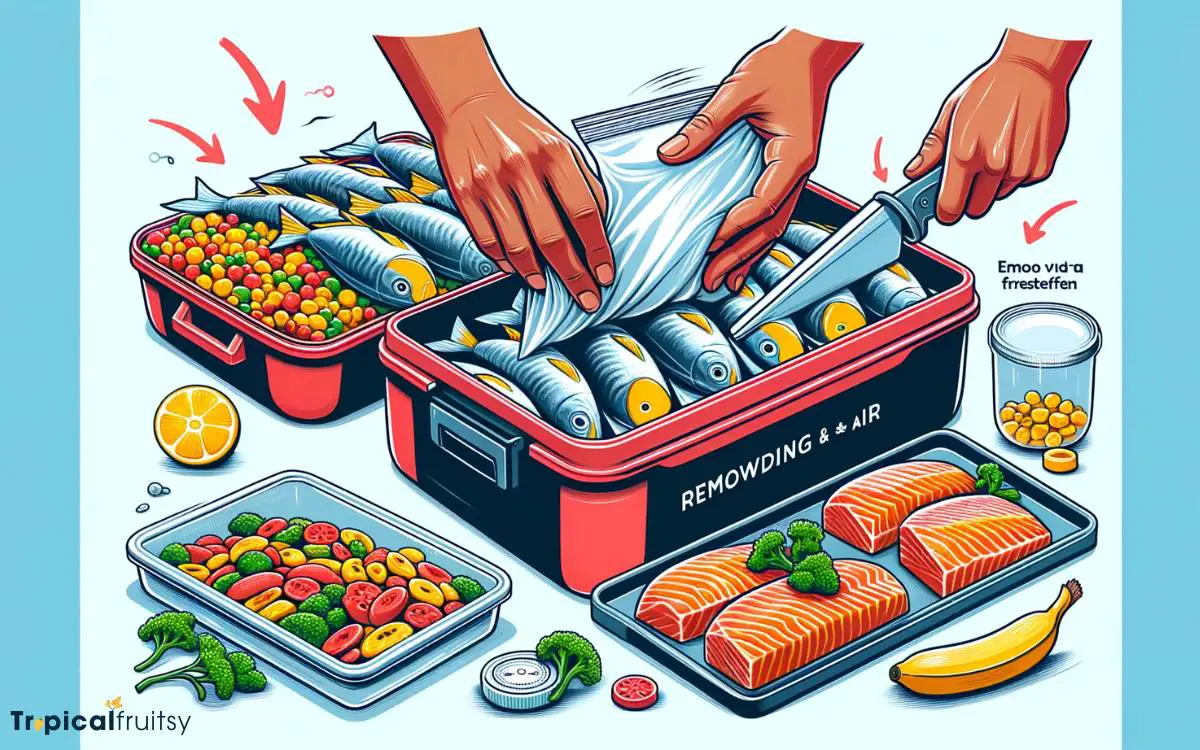
Adequate packaging is crucial to preserving the quality and flavor of ackee and saltfish when frozen.
To ensure the integrity of the dish throughout the freezing process, one must adhere to certain packaging methodologies designed to mitigate freezer burn and prevent odor transfer.
Here is a precise list of packaging techniques:
- Utilize airtight, moisture-resistant containers or freezer bags specifically designed for low-temperature storage.
- Portion the ackee and saltfish into meal-sized quantities to avoid thawing more than necessary at one time.
- Expel excess air from freezer bags before sealing to minimize oxidation and ice crystal formation.
- Label each package with the date of freezing and contents for efficient inventory management and to avoid surpassing recommended storage durations.
These steps are imperative for maintaining the dish’s quality during extended freezer storage.
Thawing and Reheating Guidelines
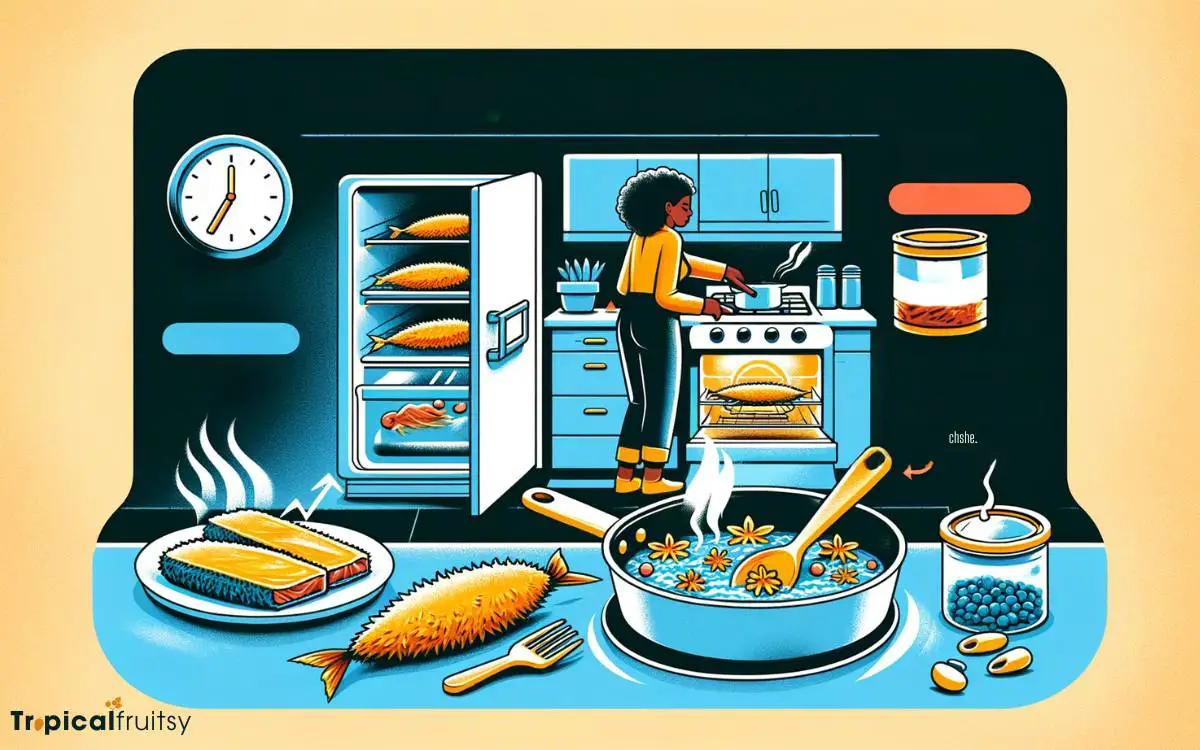
When ready to enjoy your frozen ackee and saltfish, it is essential to properly thaw and reheat the dish to ensure its taste and texture are optimally preserved.
Begin by transferring the frozen meal to the refrigerator, allowing it to thaw gradually; this process can take several hours, typically overnight.
Abrupt temperature changes can compromise the integrity of the delicate ackee fruit, so avoid using microwaves for thawing.
For reheating, gently warm the thawed ackee and saltfish in a skillet over medium-low heat. Stir occasionally to prevent sticking, without over-agitating the ackee which can cause it to become mushy.
The goal is to reach an internal temperature of 74°C (165°F) to ensure food safety. Serve promptly once adequately warmed to enjoy the dish’s nuanced flavors and textures.
Common Freezing Mistakes
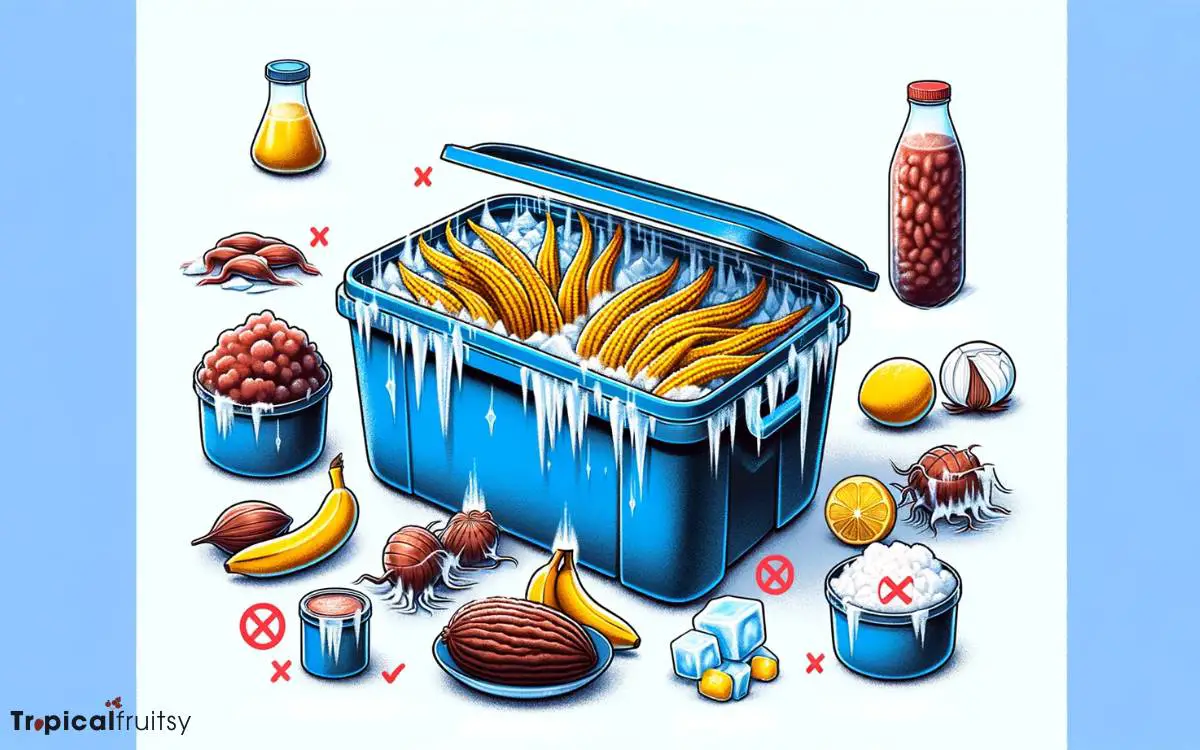
Despite its convenience, freezing ackee and saltfish without due regard for proper techniques can lead to several common mistakes that compromise the dish’s quality.
These errors can have a profound effect on both texture and flavor, detracting from the authentic experience of this classic Caribbean dish.
- Inadequate Packaging: Exposing the dish to air can cause freezer burn, which degrades texture and flavor.
- Improper Cooling: Freezing the dish while it is still warm can lead to ice crystal formation, affecting the consistency.
- Incorrect Portioning: Freezing in large batches may lead to unnecessary thawing and refreezing, reducing quality.
- Overlooking Labeling: Failing to date and detail the contents can result in extended storage beyond optimal freshness.
Understanding these pitfalls sets the stage for discussing the shelf life considerations of frozen ackee and saltfish.
Shelf Life Considerations
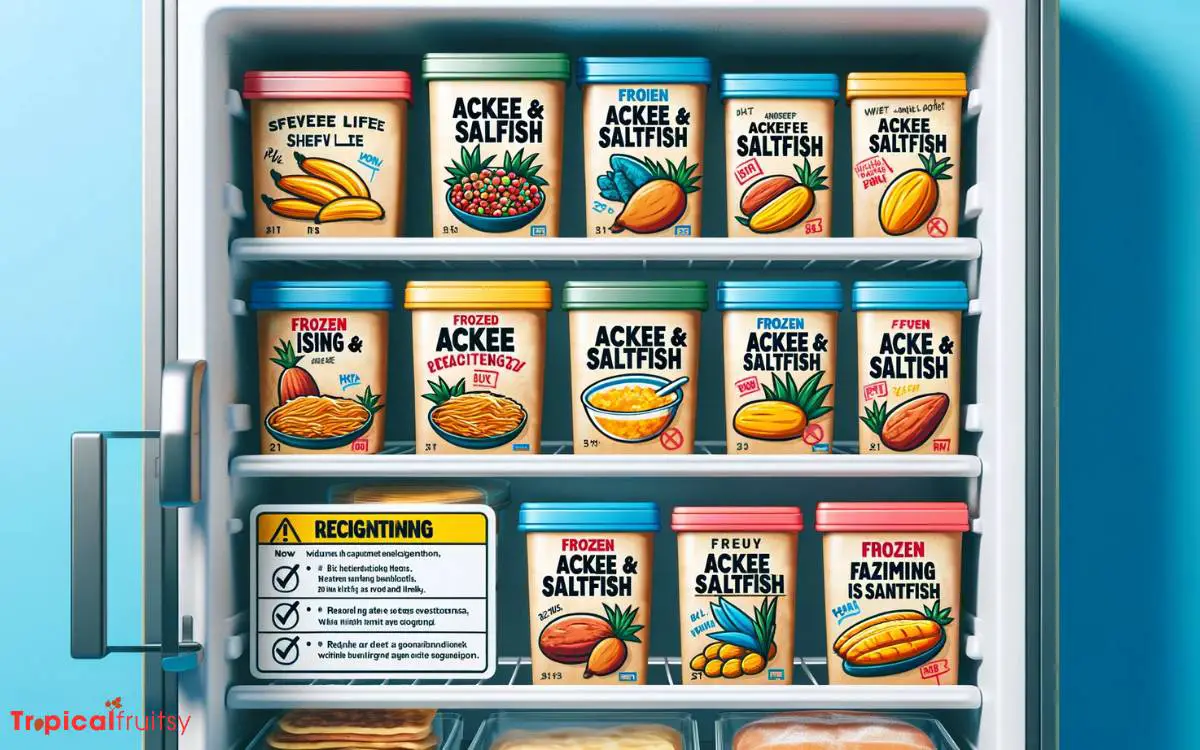
Transitioning from common freezing mistakes, it is essential to consider the shelf life of frozen ackee and saltfish to maintain its quality over time.
When properly prepared, packaged, and stored at a constant temperature of 0°F (-18°C) or below, ackee and saltfish can be preserved for up to 3 months without significant degradation in taste or texture.
It is crucial to minimize the presence of air in the packaging to prevent freezer burn, which can adversely affect the dish’s flavor profile and moisture content.
To ensure maximum freshness, date labeling is recommended to facilitate proper rotation and usage.
Thoroughly defrosting within the refrigerator before reheating will also contribute to the retention of the dish’s authentic characteristics.
Alternatives to Freezing
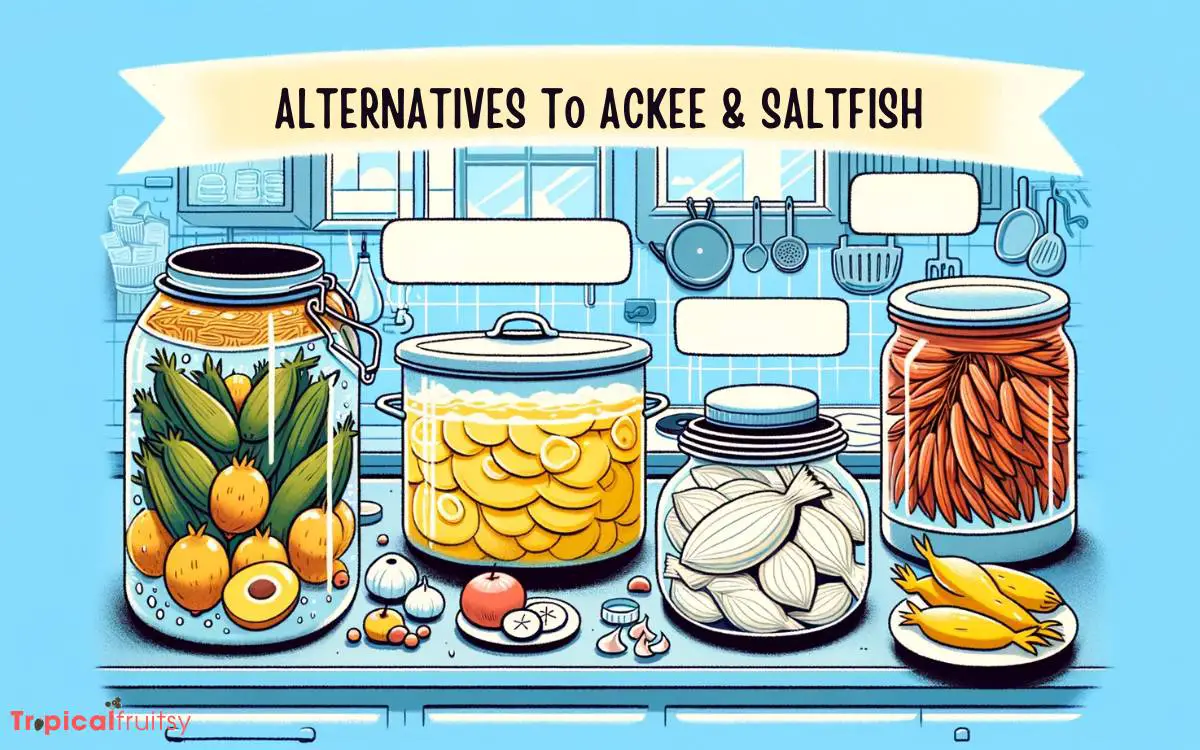
While freezing is a common method for extending the shelf life of ackee and saltfish, other preservation techniques can also be effective.
Refrigeration, for instance, can maintain the dish’s quality for a shorter term, typically a few days, when stored at temperatures below 4°C.
Additionally, vacuum sealing can considerably prolong its freshness by reducing oxygen exposure.
Canning ackee using a high-temperature sterilization process provides a shelf-stable option that can last for years without refrigeration.
Refrigeration Shelf Life
In lieu of freezing, ackee and saltfish can be safely refrigerated for up to three days when stored in airtight containers.
The preservation of this dish in a refrigerated environment hinges upon maintaining optimal conditions to inhibit bacterial growth and prevent spoilage.
Here are the steps to ensure maximum freshness:
- Cool the ackee and saltfish to room temperature before refrigeration to prevent condensation.
- Transfer the dish into a clean, airtight container to minimize exposure to air.
- Label the container with the current date to keep track of its shelf life.
- Store the container in the coldest part of the refrigerator, away from the door, to maintain a consistent temperature.
Vacuum Sealing Preservation (Alternatives to Freezing)
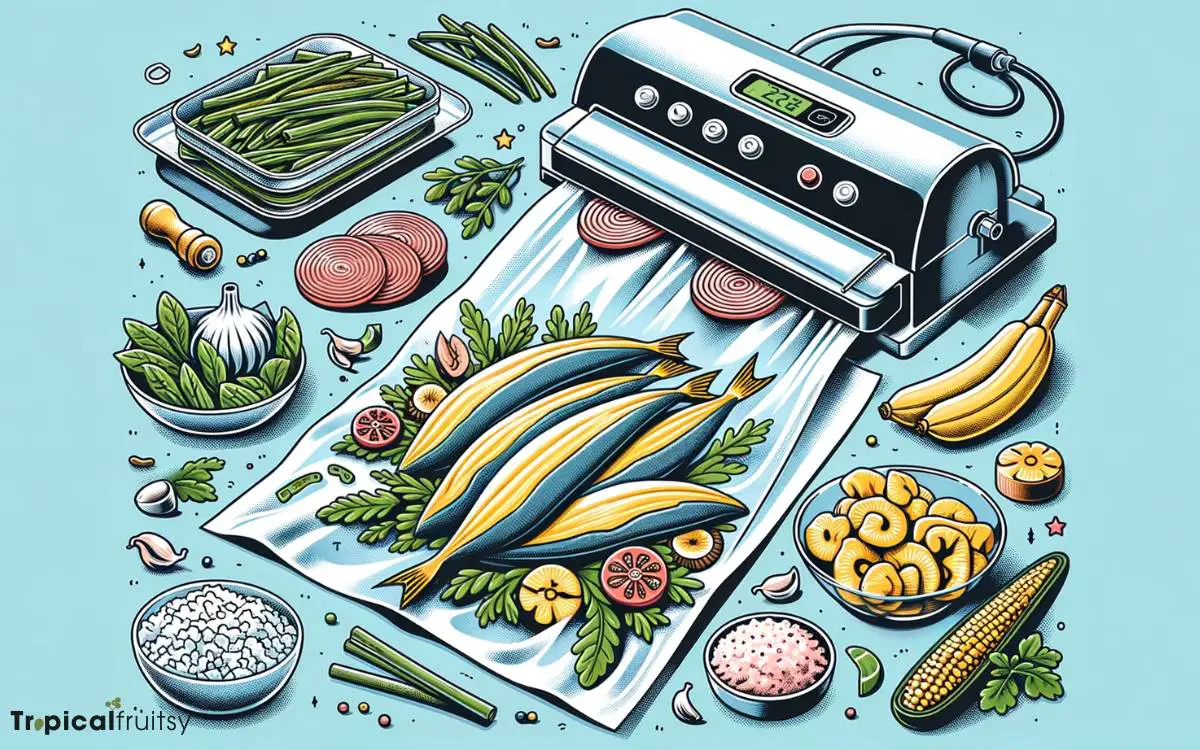
One viable alternative to freezing ackee and saltfish, which can extend its shelf life beyond refrigeration, is vacuum sealing the prepared dish.
This preservation method involves removing air from the package before sealing, which significantly reduces the oxidation and growth of aerobic bacteria or fungi.
Vacuum sealing is beneficial for maintaining the flavor, texture, and nutritional value of ackee and saltfish over an extended period.
| Benefit | Description |
|---|---|
| Oxygen Reduction | Minimizes oxidation and spoilage. |
| Moisture Barrier | Prevents dehydration and weight loss. |
| Flavor Preservation | Maintains original taste and aroma. |
| Storage Efficiency | Saves space and allows for easy stacking. |
When employing this technique, it is crucial to ensure that the vacuum sealer is of a professional grade to achieve the optimal seal and that the vacuum bags used are puncture-resistant to maintain integrity during storage.
Canning Ackee Method
Transitioning from vacuum sealing to canning, another effective alternative for preserving ackee and saltfish without freezing involves the canning method, which seals the food in airtight containers to prevent spoilage.
This traditional preservation technique can extend the shelf life of ackee and saltfish while maintaining its flavor profile.
To ensure safety and quality, the following steps should be meticulously executed:
- Sterilization: Thoroughly sterilize all canning jars and lids to eliminate potential contaminants.
- Preparation: Cook the ackee and saltfish as per recipe, ensuring that it is properly seasoned.
- Sealing: Fill the jars with the prepared dish, leaving appropriate headspace, and seal them tightly.
- Processing: Process the sealed jars in a boiling water canner or pressure canner as per established guidelines for the specific altitude and jar size.
Is it safe to freeze Ackee and Saltfish for later consumption?
Yes, it is safe to freeze Ackee and Saltfish for later consumption, even for pregnant women. However, pregnant women should avoid eating ackee while pregnant due to the potential risk of foodborne illness. It is important to cook both ackee and saltfish thoroughly before freezing them to ensure safety.
Can You Reheat Ackee and Saltfish

Yes, you can reheat ackee and saltfish. However, it’s important to do so carefully to maintain the dish’s texture and flavor, and to ensure food safety.
Here are some tips for reheating ackee and saltfish:
- Use a Stove: The best way to reheat ackee and saltfish is on the stove. Gently heat it in a pan over low to medium heat. Stir occasionally to ensure even heating and to prevent it from sticking to the pan.
- Microwave with Caution: If you choose to use a microwave, do so at a lower power setting and in short intervals, stirring in between. Microwaving can sometimes cause the ackee to become mushy, so it’s not the most recommended method.
- Avoid Overheating: Ackee is delicate and can become mushy if overheated. Warm the dish just enough so that it’s heated through.
- Add a Little Water or Oil: If the dish seems dry, you can add a small amount of water or oil when reheating to help maintain moisture.
- Food Safety: Ensure the dish is reheated to an internal temperature of at least 165°F (74°C) to ensure food safety.
- Refrigerate Leftovers Promptly: If you have leftovers, make sure to refrigerate them within two hours of cooking. Properly stored, ackee and saltfish can last in the fridge for up to two days.
Remember, while reheating ackee and saltfish is possible, it’s always best enjoyed fresh to appreciate its unique flavor and texture fully.
Conclusion
The preservation of ackee and saltfish through freezing is feasible if meticulous steps are followed.
Factors such as moisture content, packaging quality, and freezing speed significantly influence the dish’s post-thaw integrity.
By adhering to optimal packaging techniques and thawing protocols, one can maintain its texture and flavor.
Nevertheless, shelf life is finite, and alternative preservation methods may be considered to prolong enjoyment while ensuring safety and preserving the dish’s authentic characteristics.






